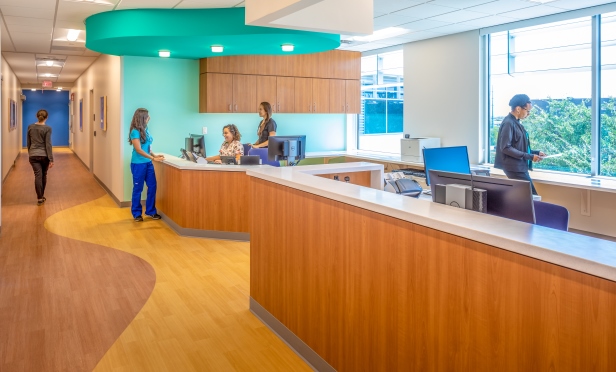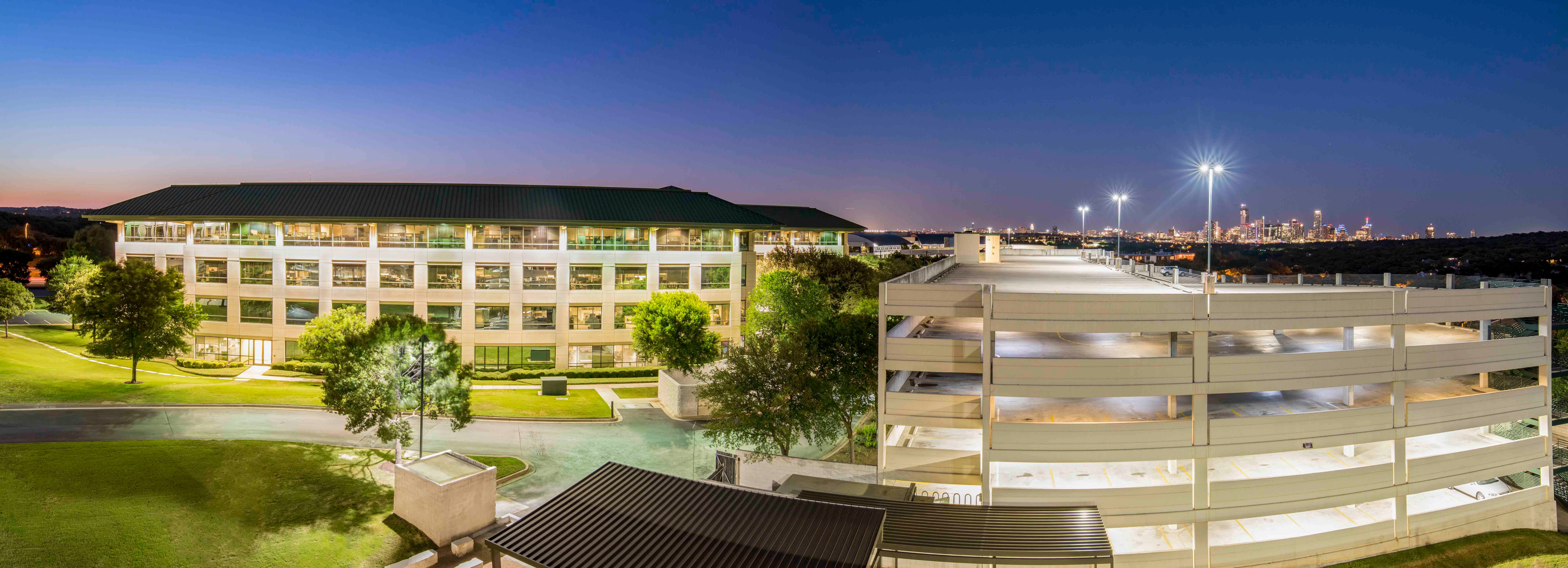 The Texas Children's Specialty project scope was a build-out of 28,000 square feet of public, waiting and clinical areas.
The Texas Children's Specialty project scope was a build-out of 28,000 square feet of public, waiting and clinical areas.
AUSTIN, TX—On the heels of opening two practices earlier this year, another Texas Children's Specialty Care project was recently completed as part of an initiative announced last year to provide additional care to the growing Austin market. The office will bring subspecialty pediatric care to the Austin community, increasing access for children and families in need of cardiology, ophthalmology and pulmonary care, among other subspecialties.
The project scope included a build-out of 28,000 square feet that consisted of public and waiting areas, clinical areas for various subspecialty services including allergy and immunology, cardiology, ophthalmology, pulmonology and imaging services. The project also included the build-out of an administrative suite which includes a large conference room, small conference room and an employee break area.
Construction began in April and was completed by McCarthy Building Companies Inc.'s Specialized Solutions Group.
“At McCarthy, our client-focused approach is at the core of everything do, which leads to long-term partnerships with clients like Texas Children's,” said Jim Stevenson, McCarthy Houston division president.
SSG is a McCarthy initiative developed in 2013, which focuses on healthcare, research, and higher education renovations and expansions. McCarthy is the largest healthcare builder in the country and through SSG, McCarthy expanded and built upon its solid reputation within the Texas healthcare market.
“Through SSG, McCarthy has been able to pursue and win high-profile work with some of the largest most well-known healthcare and research institutions in the Texas Medical Center, the largest medical center in the world, as well as other surrounding premier institutions including Texas Children's Hospital, Rice University, MD Anderson, Houston Methodist Hospital, Baylor College of Medicine and CHI St. Luke's Health,” Stevenson tells GlobeSt.com.
McCarthy also partnered with Texas Children's Pediatrics on the acquisition of its first two practices in Austin earlier this year. Texas Children's Austin Pediatrics–located at 5625 Eiger Rd., suite 225–and Texas Children's Pediatric Partners–located at 3410 Far West Blvd., suite 130–joined the network of more than 50 locations offering pediatric care to Texas families. These two pediatric practices follow the opening of Texas Children's Urgent Care Westgate in March 2018, which was Texas Children's first healthcare location in Austin, GlobeSt.com learns.
Shifts toward outpatient care along with industry consolidation are encouraging off-campus medical office development, and investors are optimistic about the market outlook, indicates a mid-year report by Marcus & Millichap. Mergers among healthcare companies and providers have been a driving force behind changes in the industry and how physicians interact with patients.
And, emerging technologies and a shift in the care delivery model are spilling over into the development of medical offices. A rise in outpatient services and procedures has encouraged medical office development in off-campus locations during the past few years. Hospitals and medical providers seek to place offices in neighborhoods and suburban areas closer to where people live and work, in order to reduce costs and appeal to patients seeking medical care.
While these factors bode well for today's medical office market, the industry still faces numerous challenges as an aging population is met with a physician shortage, rising healthcare costs and insurance reform uncertainty. Despite these challenges, patient demand for services remains strong and will continue to drive further expansion and growth in the medical office building sector.
Healthcare expenditures have risen at a hastened pace since 2014 and current projections place annual growth at an average near 5.5% through 2026. With expenses rising faster than forecasted GDP growth, healthcare expenditures are expected to make up nearly 20% of US GDP by 2026, growing from 13.3% in 2000. In 2016, healthcare expenditures surpassed $10,000 per capita, the report outlines.
© Touchpoint Markets, All Rights Reserved. Request academic re-use from www.copyright.com. All other uses, submit a request to [email protected]. For more inforrmation visit Asset & Logo Licensing.







